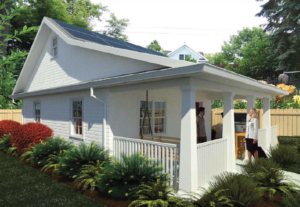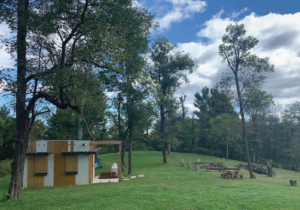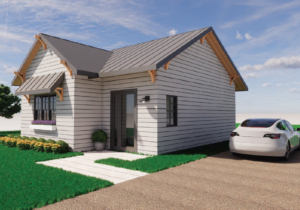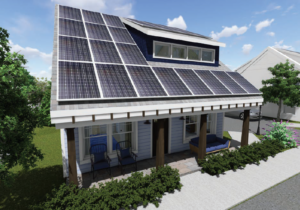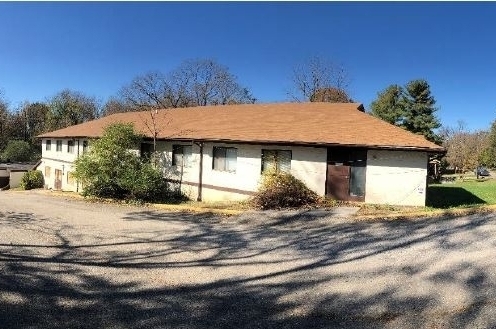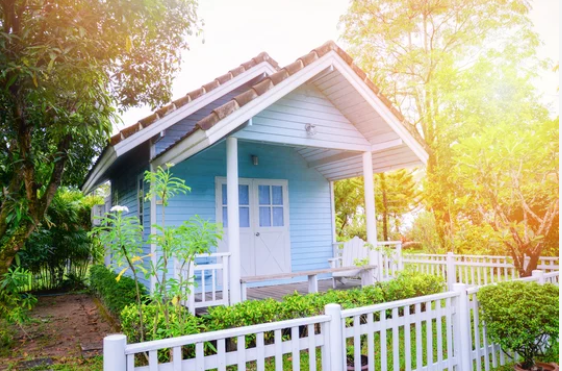What is an Accessory Apartment?
An accessory apartment, also known as an accessory dwelling unit (ADU), is an independent, residential living area that is on the same property as a larger, primary dwelling unit.
The term accessory describes the unit as secondary to the primary unit, in the same way a garage is of secondary importance to a home. These units are typically limited in size to help reduce impacts on neighbors and blend in with the surrounding homes.
Benefits of Accessory Apartments/ADUs
- Provides supplemental income to homeowners
- Offers an affordable housing option for smaller households
- Provides seniors, especially those living alone, with another housing option and allows older owners to age in place
- Provides a lower-cost housing for younger residents
- Offers a quicker and easier way to boost housing production
- Diversifies the range of housing types available in the City of Roanoke
Learn more about the benefits of ADUs from the City of Seattle:
Accessory Apartment/ADU Guidelines
Accessory Apartments/ADUs must meet the following guidelines:
- Located in a building that is accessory to, and is located on the same lot as a single-family detached dwelling
- Only one accessory apartment shall be permitted on any 1 lot
- An accessory building cannot be separately metered for utilities from the principal single-family detached dwelling
- The floor area of the accessory apartment cannot exceed 800 square feet 80% of the gross floor area of the principal residential use with which it is associated
- Notwithstanding the minimum lot area per dwelling unit specified in Table 36.2-312 of the Code of Ordinances, an accessory apartment cannot be considered as a dwelling unit for purposes of determining the minimum lot area per dwelling unit.
Reference Sec. 36.2-402 and Sec. 36.2-403 in the Code of Ordinances for more information
ADU Guide
Examples of Acceptable ADUs
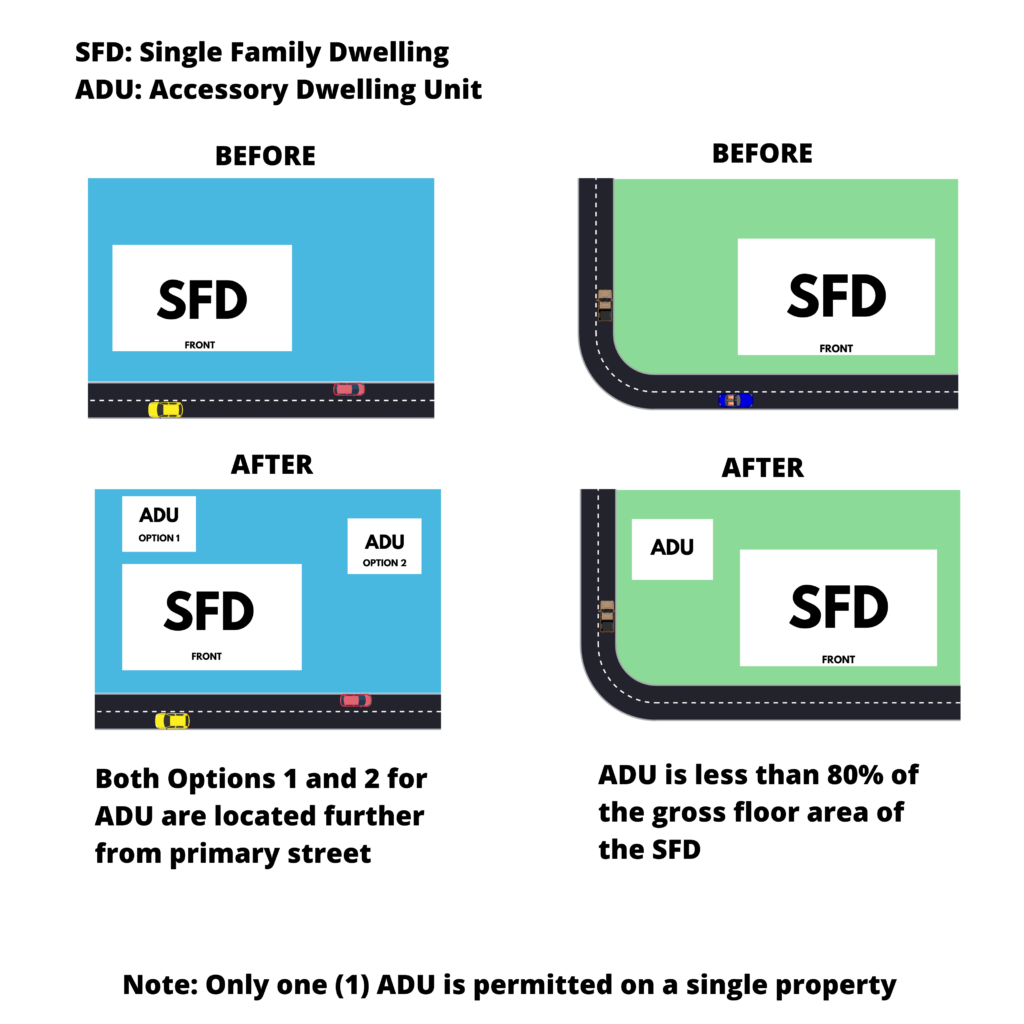
Examples of Unacceptable ADUs
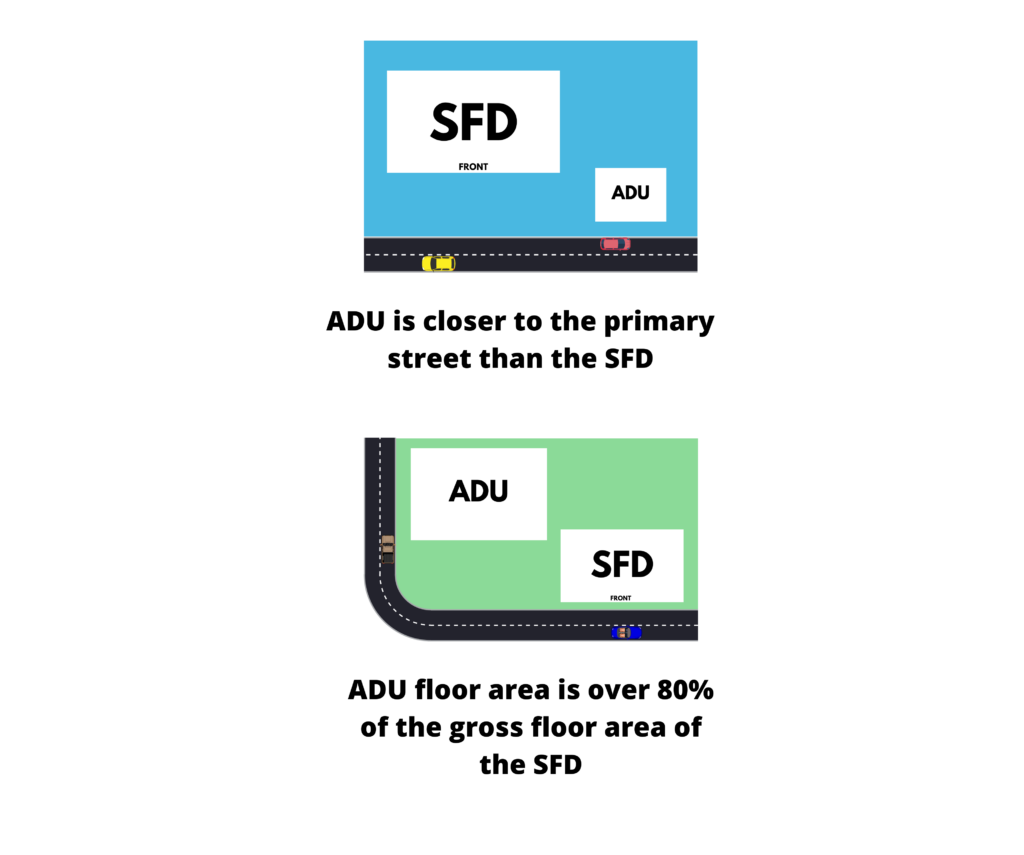
How Do I Obtain a Permit?
-
- Determine if your lot will meet the minimum requirements for an accessory structure
- Create a budget for your project
- Choose a design from our pre-approved plans or a licensed professional can assist you with designing your own plan.
- Prepare a site plan
- Submit an application for a Residential Building and Zoning Permit
Special Districts
Lots located in special districts may be subject to additional guidelines to obtain a permit.
Visit the City of Roanoke GIS website to find out if your property is in a Special District. Either search for your address or toggle each Special District in Layers. Visit each website to learn more information:
The City of Roanoke and the American Institute of Architects hosted an ADU design competition sponsored by AARP. The winning designs have been made available to the public for free in order to encourage construction of ADUs and grow housing within the City. View the ADU Design Book to see all entries and competition details.
Winners
Each of the winning design plans is pre-approved by a building official and can be submitted as part of a construction permit application.
- View 1st Place Design by Steve Sunderman | Terrazia PC Architecture
- View 2nd Place Design by Derek B. Cundiff | Cundiff Architecture, Inc.
- View 3rd Place Design by Haley Kellam | Dwell Design Studio
- View 3rd Place Design by Helen Jadlowski & Laura Parris | SFCS Architects
View the presentation below to learn more about the design process and unique elements of each winning entry.
Contact Us
If you have questions or concerns email us at Planning@roanoke.va.gov
Permit/Zoning Questions: 540-853-1090
Project Assistance: 540-853-5550
What is an Accessory Apartment?
An accessory apartment, also known as an accessory dwelling unit (ADU), is an independent, residential living area that is on the same property as a larger, primary dwelling unit.
The term accessory describes the unit as secondary to the primary unit, in the same way a garage is of secondary importance to a home. These units are typically limited in size to help reduce impacts on neighbors and blend in with the surrounding homes.
Benefits of Accessory Apartments/ADUs
- Provides supplemental income to homeowners
- Offers an affordable housing option for smaller households
- Provides seniors, especially those living alone, with another housing option and allows older owners to age in place
- Provides a lower-cost housing for younger residents
- Offers a quicker and easier way to boost housing production
- Diversifies the range of housing types available in the City of Roanoke
Learn more about the benefits of ADUs from the City of Seattle:
Accessory Apartment/ADU Guidelines
Accessory Apartments/ADUs must meet the following guidelines:
- Located in a building that is accessory to, and is located on the same lot as a single-family detached dwelling
- Only one accessory apartment shall be permitted on any 1 lot
- An accessory building cannot be separately metered for utilities from the principal single-family detached dwelling
- The floor area of the accessory apartment cannot exceed 800 square feet 80% of the gross floor area of the principal residential use with which it is associated
- Notwithstanding the minimum lot area per dwelling unit specified in Table 36.2-312 of the Code of Ordinances, an accessory apartment cannot be considered as a dwelling unit for purposes of determining the minimum lot area per dwelling unit.
Reference Sec. 36.2-402 and Sec. 36.2-403 in the Code of Ordinances for more information
ADU Guide
Examples of Acceptable ADUs

Examples of Unacceptable ADUs

How Do I Obtain a Permit?
-
- Determine if your lot will meet the minimum requirements for an accessory structure
- Create a budget for your project
- Choose a design from our pre-approved plans or a licensed professional can assist you with designing your own plan.
- Prepare a site plan
- Submit an application for a Residential Building and Zoning Permit
Special Districts
Lots located in special districts may be subject to additional guidelines to obtain a permit.
Visit the City of Roanoke GIS website to find out if your property is in a Special District. Either search for your address or toggle each Special District in Layers. Visit each website to learn more information:
The City of Roanoke and the American Institute of Architects hosted an ADU design competition sponsored by AARP. The winning designs have been made available to the public for free in order to encourage construction of ADUs and grow housing within the City. View the ADU Design Book to see all entries and competition details.
Winners
Each of the winning design plans is pre-approved by a building official and can be submitted as part of a construction permit application.
- View 1st Place Design by Steve Sunderman | Terrazia PC Architecture
- View 2nd Place Design by Derek B. Cundiff | Cundiff Architecture, Inc.
- View 3rd Place Design by Haley Kellam | Dwell Design Studio
- View 3rd Place Design by Helen Jadlowski & Laura Parris | SFCS Architects
View the presentation below to learn more about the design process and unique elements of each winning entry.
Contact Us
If you have questions or concerns email us at Planning@roanoke.va.gov
Permit/Zoning Questions: 540-853-1090
Project Assistance: 540-853-5550
Pick Your Design
View the winning design plans from our ADU Competition.
Each set of plans is pre-approved by a building official and can be submitted as part of a construction permit application.


